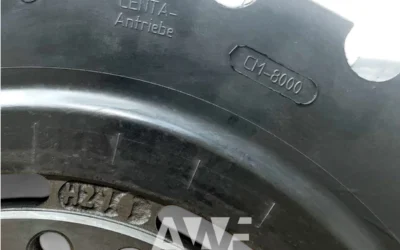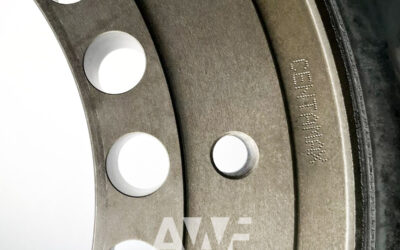Read Article
Read Article
Discussion –
Understanding Shore Hardness in Centaflex A Couplings – Why Matching Matters
Understanding Shore Hardness in Centaflex A Couplings – Why Matching Matters
When replacing a Centaflex A coupling element, many assume that any rubber part will do—as long as the size and shape match. That’s a costly mistake.
In reality, Shore hardness—the stiffness of the rubber—directly affects how the coupling performs under load. Replacing with the wrong Shore hardness can lead to vibration issues, resonance, and even equipment failure.
What Is Shore Hardness?
Shore A hardness measures how stiff or soft a rubber compound is. In Centaflex A couplings, it influences:
- Torsional flexibility
- Damping behavior
- Vibration absorption
- Thermal expansion behavior
The most common grades are:
50 Shore A Softer; better for vibration damping
60 Shore A Stiffer; ideal for higher torque and thermal loads
Why You MUST Match the Original Shore Hardness
CENTA doesn’t choose Shore hardness at random. Couplings are selected with OEM engineers, using TVA (Torsional Vibration Analysis) and other simulations.
Changing Shore hardness—even slightly—can cause:
- Unexpected resonance at operating speed
- Premature failure
- Shaft or bearing damage
- Warranty voids
Always replace Centaflex A elements with the exact same Shore hardness. The code (e.g. CF-A-140-0-50) usually indicates it.
Aging Affects Shore Hardness Too
Rubber becomes stiffer as it ages. A 50 Shore element may perform closer to 60 Shore after years in service. That’s why OEMs mark production dates on genuine CENTA elements. More about Genuine elements→
Final Advice
- Match size
- Match type (0 or 0–S)
- Match Shore hardness
- Choose original CENTAFLEX only
📩 Need help identifying the correct part? Send us a photo, drawing, or your existing part number — we’ll confirm the right fit.
You May Also Like
Understanding CENTAMAX Coupling Types – SB, SBE, SC, and SCE
Read ArticleRead ArticleDiscussion - CENTAMAX couplings are manufactured in several fitment types to suit different...
Why OEM Centamax Couplings Outperform Copies in Large Gensets
Read ArticleRead ArticleDiscussion - In high-output marine generators, gas power units, locomotives, and heavy...
Common Failure Causes in BoWex® FLE-PA Couplings – What to Watch For and How to Avoid Downtime
Read ArticleRead ArticleDiscussion - When your engine-to-pump connection fails, the coupling is often the first...





